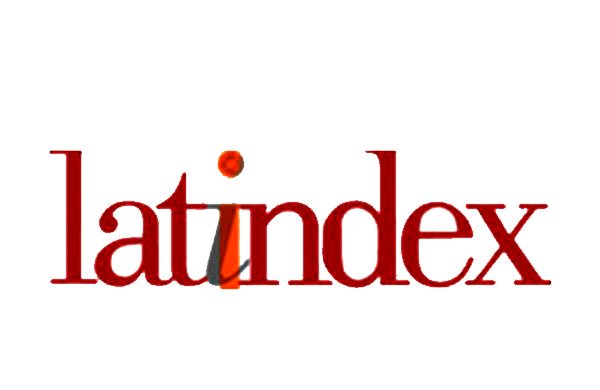Anabolic androgenic relation and adverse effects of 5?-hydroxy laxogenin in trained rats
Relação anabólica androgênica e efeitos adversos da 5?-hidroxi laxogenina em ratos treinados
DOI:
https://doi.org/10.17765/2176-9206.2025v18e13262Keywords:
Brassinosteroids, Synthetic anabolic steroids, Resistance training, Muscle hypertrophy, Steroidal saponinAbstract
5?-hydroxy laxogenin (5?-HL) is being inadvertently used to improve performance, although reports of its anabolic and/or androgenic actions in healthy humans or animal models are lacking. In this study 5?-HL (group THL) was compared with Oxandrolone (OX, group TOX) or vehicle (mineral oil, group TCN), given orally for six weeks to male Wistar rats subjected to resistance training in vertical ladder. Regardless of the treatment, the training protocol improved performance, recorded as the maximal load. 5?-HL and OX affected plasma lipids, increased muscle mass gain (THL) and fiber diameter (TOX) without changing body mass, glucose homeostasis or adiposity. 5?-HL, unlike OX, did not cause atrophy of the reproductive organs. 5?-HL had a better anabolic androgenic relation than OX in this model. However, its adverse effects and its neutral effect on performance do not support its safe use by healthy humans.
Downloads
References
1. Bishop GJ, Koncz C. Brassinosteroids and plant steroid hormone signaling. Plant Cell. 2002;14(Suppl 1):97-110. https://doi.org/10.1105/tpc.001461
2. Okanishi T, Akahori A, Yasuda F. Studies on the steroidal components of domestic plants. XLVII. Constituents of the stem of Smilax Sieboldii Miq. (1). The structure of laxogenin. Chem Pharm Bull. 1965;13(5):545-50. https://doi.org/10.1248/cpb.13.54
3. Iglesias-Arteaga MA, Gil RP, Martínez CSP, Machado RC. Spirostanic analogues of testosterone. Synthesis, characterization and biological activity of laxogenin, 23-hydroxylaxogenin and 23-ketolaxogenin (23-oxolaxogenin). J Chem Soc. 2001;1:261-6. https://doi.org/10.1002/chin.200435179
4. Rodríguez CR, Vilalobos YI, Becerra EA, Machado FC, Herrera DC, Zullo MAT. Synthesis and biological activity of three new 5a-hydroxy spirostanic brassinosteroid analogues. J Braz Chem Soc. 2003;14(3):466-9. https://doi.org/10.1590/S0103-50532003000300022
5. Avula B, Chittiboyina AG, Bae JY, Hider S, Wang YH, Wang M, et al. The power of hyphenated chromatography - Time of flight mass spectrometry for unequivocal identification of spirostanes in bodybuilding dietary supplements. J Pharm Biomed Anal. 2019;67:74-82. https://doi.org/10.1016/j.jpba.2018.12.045
6. Cheng ZH, Wu T, Yu BY. Steroidal glycosides from tubers of Ophiopogon japonicus. J Asian Nat Prod Res. 2006;8(6):555-9. https://doi.org/10.1080/10286020410001721122
7. Salehi B, Sener B, Kilic M, Sharifi-Rad J, Naz R, Yousaf Z, et al. Dioscorea plants: a genus rich in vital nutra-pharmaceuticals - A review. Iran J Pharm Res. 2019;18(Suppl 1):68-89. https://doi.org/10.22037/ijpr.2019.112501.1379
8. Parama D, Boruah M, Kumaril Y, Rana V, Banik K, Harsha C, et al. Diosgenin, a steroidal saponin, and its analogues: effective therapies against different chronic diseases. Life Sci. 2020;260:118182. https://doi.org/10.1016/j.lfs.2020.118182
9. Orr R, Singh MF. The anabolic androgenic steroid oxandrolone in the treatment of wasting and catabolic disorders. Drugs. 2004;64(7):725-50. https://doi.org/10.2165/00003495-200464070-00004
10. Wu C, Kovac JR. Novel uses for the anabolic androgenic steroids nandrolone and oxandrolone in the management of male health. Curr Urol Rep. 2016;17(10):72. https://doi.org/10.1007/s11934-016-0629-8
11. Kuhn CM. Anabolic steroids. Recent Prog Horm Res. 2002;57:411-34. https://doi.org/10.1210/rp.57.1.411
12. Miller JT, Btaiche IF. Oxandrolone treatment in adults with severe thermal injury. Pharmacotherapy. 2009;29(2):213-26. https://doi.org/10.1592/phco.29.2.21
13. Sheffield-Moore M, Urban RJ, Wolf SE, Jian J, Catlin DH, Herndon DN, et al. Short-term oxandrolone administration stimulates net muscle protein synthesis in young men. J Clin Endocrinol Metab. 1999;84(8):2705-11. https://doi.org/10.1210/jcem.84.8.5923
14. Sheffield-Moore M, Paddon-Jones D, Casperson SL, Gilkison C, Volpi E, Wolf SE, et al. Androgen therapy induces muscle protein anabolism in older women. J Clin Endocrinol Metab. 2006;91(10):3844-9. https://doi.org/10.1210/jc.2006-0588
15. Burgomaster KA, Howarth KR, Phillips SM, Rakobowchuk M, Macdonald MJ, McGee SL, et al. Similar metabolic adaptations during exercise after low volume sprint interval and traditional endurance training in humans. J Physiol. 2008;586(1):151-60. https://doi.org/10.1113/jphysiol.2007.142109
16. Esposito D, Rathinasabapathy T, Poulev A, Komarnytsky S, Raskin I. Akt-dependent anabolic activity of natural and synthetic brassinosteroids in rat skeletal muscle cells. J Med Chem. 2011a;54(12):4057-66. https://doi.org/10.1021/jm200028
17. Duncan ND, Williams DA, Lynch GS. Adaptations in rat skeletal muscle following long-term resistance exercise training. Eur J Appl Physiol Occup Physiol. 1998;77(4):372-8. https://doi.org/10.1007/s00421005034
18. Hornberger Jr TA, Farrar RP. Physiological hypertrophy of the FHL muscle following 8 weeks of progressive resistance exercise in the rat. Can J Appl Physiol. 2004;29(1):16-31. https://doi.org/10.1139/h04-00
19. Pereira VAR, Vedovelli KS, Muller GY, Depieri YF, Avelar DHCG, de Amo AHE, et al. Pros and cons of insulin administration on liver glucose metabolism in strength-trained healthy mice. Braz J Med Biol Res. 2019;52(2):e7637. https://doi.org/10.1590/1414-431X20187637
20. Muller GY, Amo AHE, Vedovelli KS, Mariano IR, Bueno GC, Furlan JP, et al. Resistance high-intensity interval training (HIIT) improves acute gluconeogenesis from lactate in mice. Am J Sports Sci. 2019;7(2):53-9. https://doi.org/10.11648/j.ajss.20190702.12
21. Muller GY, Matos FO, Perego-Junior JE, Kurauti MA, Pedrosa MMD. High-intensity interval resistance training (HIIRT) improves liver gluconeogenesis from lactate in Swiss mice. Appl Physiol Nutr Metab. 2022;47(4):439-46. https://doi.org/10.1139/apnm-2021-0721
22. Radaelli R, Fleck SJ, Leite T, Leite RD, Pinto RS, Fernandes L, et al. Dose-response of 1, 3, and 5 sets of resistance exercise on strength, local muscular endurance, and hypertrophy. J Strength Cond Res. 2015;29(5):1349-58. https://doi.org/10.1519/JSC.000000000000075
23. Friedewald WT, Levy RI, Fredrickson DS. Estimation of the concentration of low-density lipoprotein cholesterol in plasma, without use of the preparative ultracentrifuge. Clin Chem. 1972;18:499-502.
24. Aguiar AF, Aguiar DH, Felisberto ADS, Carani FR, Milanezi RC, Padovani CR, et al. Effects of creatine supplementation during resistance training on myosin heavy chain (MHC) expression in rat skeletal muscle fibers. J Strength Cond Res. 2010;24(1):88-96. https://doi.org/10.1519/JSC.0b013e3181aeb103
25. Folch J, Lees M, Sloane Stanley GH. A simple method for the isolation and purification of total lipids from animal tissues. J Biol Chem. 1957;226(1):497-509.
26. Wang ZY, Seto H, Fujioka S, Yoshida S, Chory J. BRI1 is a critical component of a plasma-membrane receptor for plant steroids. Nature. 2001;410(6826):380-3. https://doi.org/10.1038/35066597
27. Gibala MJ, Little JP, Macdonald MJ, Hawley JA. Physiological adaptations to low-volume, high-intensity interval training in health and disease. J Physiol. 2012;590(5):1077-84. https://doi.org/10.1113/jphysiol.2011.22472
28. Lima YC, Kurauti MA, Alves GF, Ferezini J, Piovan S, Malta A, et al. Whey protein sweetened with Stevia rebaudiana Bertoni (Bert.) increases mitochondrial biogenesis markers in the skeletal muscle of resistance-trained rats. Nutr Metab. 2019;16:65. https://doi.org/10.1186/s12986-019-0391-2
29. Schoenfeld BJ, Grgic J, Ogborn D, Krieger JW. Strength and hypertrophy adaptations between low-vs. high-load resistance training: a systematic review and meta-analysis. J Strength Condit Res. 2017;31(12):3508-23. https://doi.org/10.1519/JSC.0000000 00000220
30. Arazi H, Rahmati S, Ghafoori H. The interaction effects of resistance training and sustanon abuse on liver antioxidant activities and serum enzymes in male rats. Interv Med Appl Sci. 2017;9(3):178-83. https://doi.org/10.1556/1646.9.2017.2
31. Schiaffino S, Reggiani C, Akimoto T, Blaauw B. Molecular mechanisms of skeletal muscle hypertrophy. J Neuromusc Dis. 2012;8(2):169-83. https://doi.org/10.3233/JND-200568
32. Manning BD, Cantley LC. AKT/PKB signaling: navigating downstream. Cell. 2007;129(7):1261-74. https://doi.org/10.1016/j.cell.2007.06.009
33. Rommel C, Bodine SC, Clarke BA, Rossman R, Nunez L, Stitt TN, et al. Mediation of IGF-1-induced skeletal myotube hypertrophy by PI(3)K/Akt/mTOR and PI(3)K/Akt/GSK3 pathways. Nat Cell Biol. 2001;3(11):1009-13. https://doi.org/10.10 38/ncb1101-100
34. Kjaer M. Role of extracellular matrix in adaptation of tendon and skeletal muscle to mechanical loading. Physiol Rev. 2004;84(2):649-98. https://doi.org/10.1152/physrev. 00031.200
35. Grokett BH, Ahmad N, Warren DW. The effects of an anabolic steroid (oxandrolone) on reproductive development in the male rat. Acta Endocrinol. 1992;126(2):173-8. https://doi.org/10.1530/acta.0.1260173
36. Souza GL, Hallak J. Anabolic steroids and male infertility: a comprehensive review. BJU Intern. 2011;108(11):1860-5. https://doi.org/10.1111/j.1464-410X.2011.10131.x
37. Tan RS, Scally MC. Anabolic steroid-induced hypogonadism – towards a unified hypothesis and anabolic steroid action. Med Hypotheses. 2009;72(6):723-8. https://doi.org/10.1016/j.mehy.2008.12.042
38. Schroeder ET, Zheng L, Ong MD, Martinez C, Flores C, Stewart Y, et al. Effects of androgen therapy on adipose tissue and metabolism in older men. J Clin Endocrinol Metab. 2004;89(10):4863-72. https://doi.org/10.1210/jc.2004-0784
39. Demling R. The use of anabolic agents in catabolic states. J Burns Wounds. 2007;6:e2.
40. Venâncio DP, Nobrega ACL, Tufik S, Melo MT. Descriptive assessment on the use of anabolic steroids and their effect on the biochemical and neuroendocrine variables in practitioners of resisted exercise. Rev Bras Med Esporte. 2010;16(3):191-5. https://doi.org/10.1590/S1517-86922010000300007
41. Esposito D, Rathinasabapathy T, Poulev A, Komarnytsky S, Raskin I. Anabolic effect of plant brassinosteroid. FASEB J. 2011b;25(10):3708-19. https://doi.org/10.1096/fj.11-181271
42. Schwingel PA, Cotrim HP, Salles BR, Almeida CE, Santos CRJ, Nachef B, et al. Anabolic?androgenic steroids: a possible new risk factor of toxicant?associated fatty liver disease. Liver Intern. 2011;31(3):348-53. https://doi.org/10.1111/j.1478-3231.2010.02346.x
43. Esposito D, Kizelsztein P, Komarnytsky S, Raskin I. Hypoglycemic effects of brassinosteroid in diet-induced obese mice. Am J Physiol Endocrinol Metab. 2012;303(5):E652-8. https://doi.org/10.1152/ajpendo.00024.2012
44. Ribeiro RT, Macedo MP, Raposo JF. HbA1c, fructosamine, and glycated albumin in the detection of dysglycemic conditions. Curr Diab Ver. 2016;12(1):14-19. https://doi.org/10.2174/1573399811666150701143112
45. Vallejo-Vaz AJ, Corral P, Schreier L, Ray KK. Triglycerides and residual risk. Curr Opin Endocrinol Diab Obes. 2020;27(2):95-103. https://doi.org/10.1097/MED.0000000000 000530
46. Hartgens F, Kuipers H. Effects of androgenic-anabolic steroids in athletes. Sports Med. 2004;34(8):513-54. https://doi.org/10.2165/00007256-200434080-0000
47. Morikawa AT, Maranhão RC, Alves MJ, Negrão CE, da Silva JL, Vinagre CG. Effects of anabolic androgenic steroids on chylomicron metabolism. Steroids. 2012;77(13):1321-6. https://doi.org/10.1016/j.steroids.2012.08.004
48. Liu JD, Wu YQ. Anabolic-androgenic steroids and cardiovascular risk. Chin Med J. 2019;132(18):2229-36. https://doi.org/10.1097/CM9.0000000000000407
49. Severo CB, Ribeiro JP, Umpierre D, Da Silveira AD, Padilha MC, De Aquino Neto FR, et al. Increased atherothrombotic markers and endothelial dysfunction in steroid users. Eur J Prev Cardiol. 2013;20(2):195-201. https://doi.org/10.1177/2047487312437062
50. Kunutsor SK, Zaccardi F, Karppi J, Kurl S, Laukkanen JA. Is high serum LDL/HDL cholesterol ratio an emerging risk factor for sudden cardiac death? Findings from the KIHD study. J Atheroscler Thromb. 2017;24(6):600-8. https://doi.org/10.5551/jat.37184
51. Hall P, Cash J. What is the real function of the liver ‘function’ tests? The Ulster Med J. 2012;81(1):30-6.
52. Kobayashi A, Suzuki Y, Sugai S. Specificity of transaminase activities in the prediction of drug-induced hepatotoxicity. J Toxicol Sci. 2020;45(9):515-37. https://doi.org/10.2131/jts.45.51
53. Boada LD, Zumbado M, Torres S, López A, Díaz-Chico BN, Cabrera JJ, et al. Evaluation of acute and chronic hepatotoxic effects exerted by anabolic-androgenic steroid stanozolol in adult male rats. Arch Toxicol. 1999;73(8-9):465-72. https://doi.org/10.1007/ s00204005063
54. Dickerman RD, Pertusi M, Zachariah NY, Dufour DR, McConathy WJ. Anabolic steroid-induced hepatotoxicity: is it overstated? Clin J Sports Med. 1999;9(1):34-9. https://doi.org/10.1097/00042752-199901000-0000
55. Bond P, Llewellyn W, Van Mol P. Anabolic androgenic steroid-induced hepatotoxicity. Med Hypotheses. 2016;93:150-3. https://doi.org/10.1016/j.mehy.2016.06.004
56. Mavros Y, O'Neill E, Connerty M, Bean JF, Broe K, Kiel DP, et al. Oxandrolone augmentation of resistance training in older women: a randomized trial. Med Sci Sports Exerc. 2015;47(11):2257-67. https://doi.org/10.1249/MSS.000000000000069
57. Cabb E, Baltar S, Powers DW, Mohan K, Martinez A, Pitts E. The diagnosis and manifestations of liver injury secondary to off-label androgenic anabolic steroid use. Case Rep Gastroenterol. 2016;10(2):499-505. https://doi.org/10.1159/00044888
58. Bahrke MS, Yesalis CE. Abuse of anabolic androgenic steroids and related substances in sport and exercise. Curr Opin Pharmacol. 2004;4(6):614-20. https://doi.org/10.1016/j.coph.2004.05.006
Downloads
Published
How to Cite
Issue
Section
License
Copyright (c) 2025 Saúde e Pesquisa

This work is licensed under a Creative Commons Attribution 4.0 International License.
A submissão de originais para a revista Saúde e Pesquisa implica na transferência da Carta Concessão de Direitos Autorais, pelos autores, dos direitos de publicação digital para a revista após serem informados do aceite de publicação.A Secretaria Editorial irá fornecer da um modelo de Carta de Concessão de Direitos Autorais, indicando o cumprimento integral de princípios éticos e legislação específica. Os direitos autorais dos artigos publicados nesta revista são de direito do autor, com direitos da revista sobre a primeira publicação. Os autores somente poderão utilizar os mesmos resultados em outras publicações, indicando claramente a revista Saúde e Pesquisa como o meio da publicação original. Em virtude de tratar-se de um periódico de acesso aberto, é permitido o uso gratuito dos artigos, principalmente em aplicações educacionais e científicas, desde que citada a fonte. A Saúde e Pesquisa adota a licença Creative Commons Attribution 4.0 International.
A revista se reserva o direito de efetuar, nos originais, alterações de ordem normativa, ortográfica e gramatical, com vistas a manter o padrão culto da língua e a credibilidade do veículo. Respeitará, no entanto, o estilo de escrever dos autores. Alterações, correções ou sugestões de ordem conceitual serão encaminhadas aos autores, quando necessário. Nesses casos, os artigos, depois de adequados, deverão ser submetidos a nova apreciação. As opiniões emitidas pelos autores dos artigos são de sua exclusiva responsabilidade.

















